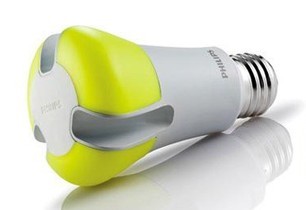A lot of recent price criticism about the new $50 dollar Philips LED bulb, as in the Washington Post 7th March article – though in fairness the bulb no doubt has its useful qualities too.
But with this bulb, as with any other expensive lighting alternatives to cheap incandescents, the repeated assurance is that prices will come down.
How likely is that?
The proponents behind banning simple incandescents hold that
“If everyone has to buy CFLs and LEDs, then they will become cheaper on economy of scale”
(and the same presumably holds for the expensive halogen type replacement incandescents, while they are allowed – as they will be banned too for ordinary usage, on the 45 lumen per Watt end regulation)
This might at first seem logical.
However, there are many reasons that this is unlikely, to any great extent…
See Freedom Light Bulb “The Deception behind Banning Light Bulbs” 13 point rundown, point number 4
“The expensive CFL and LED bulbs will become cheaper after a ban, on economy of scale!”
It may seem natural to expect that greater sales means cheaper bulbs.
Firstly it does not necessarily hold on supply and demand. Having removed the other bulb choices, there may be insufficient supply for the new demand. That raises rather than lowers prices.
Secondly, it is irrelevant how many bulbs are sold, in that manufacturers / distributors / retailers simply charge what they can. Since the cheap competition has been removed, and since there are fewer manufacturers of newer more complex bulbs, there is less pressure to reduce prices (besides which light bulb manufacturers have a history of cartels).
Meanwhile, on the Government side, pre-ban price lowering subsidies (as in North America and Europe eg http://ceolas.net/#californiacfl onwards) are no longer seen as so necessary.That is not all.
CFLs and LEDs contain rare earth elements, the price rise in recent years giving an increase in their prices, as covered in 2011 news reports.
Also they are mostly made in China, where wages are rising, and shipping transport fuel cost has also risen in recent years.
Finally, CFLs (and possibly LEDs) will be subject to increasing recycling mandates on manufacturers and retailers, which will again add to consumer purchase cost.In comparison, incandescents are of course more simply and often locally made, and have no recycling requirement.
General energy efficiency regulation price issues are covered here: http://ceolas.net/#cc2130x
Some further specific light bulb price issues are covered here: http://ceolas.net/#li14x
Regarding the 2011 news reports about CFL price increases,
see the November 2011 Light Bulb Choice blog post,
(itself quoting renewableenergyworld.com and conexiones.com).
Extracts:
Huge Price Increases Underway from Lamp Manufacturers: The impact of rare earth metals shortages
There is a rapid, emerging shortage of rare earth metals, a primary component used in the manufacture of fluorescent lamps – principally phosphors. Phosphors are transition metal compounds or rare earth compounds of various types. The most common uses of phosphors are prevalent in green technologies such as batteries, magnets, computer hard drives, TV screens, smart phones, and energy-saving light sources – and fluorescent lamps.
The problem with the supply of rare earth elements is that demand has skyrocketed over the last decade from 40,000 tons to 120,000 tons. Meanwhile, China, who owns the monopoly of rare earth minerals has been cutting its exports. Today, it only exports about 30,000 tons a year – only one-fourth of the world’s demand.
In a U.S. Department of Energy report dated December 14, 2010, it was noted that ”it is likely to take 15 years for the U.S. to mine enough rare earth minerals to shake its dependence on China.”
With China currently Global Rare Earth Oxide production trends controlling up to 97% of the world supply of rare earth metals, it shouldn’t come as a surprise that they’ve been imposing tariffs and severe export restrictions.
China first imposed trade limits in 1999, and its exports shrank by 20 percent from 2005 to 2009. Then a dramatic cutback in 2010, squeezing global supplies amid a dispute with Japan*, and they’ve fallen even further in 2011. China claims they’re just being frugal for environmental reasons, not economic leverage, but the cutbacks have nonetheless caused major price spikes – a condition our electrical and lighting industries are now having to deal with.
However,
lighting switchover is of course still justified by the proponents on the basis of the usage savings, regardless of the expensive-to-buy bulbs.
So how likely are people to save energy and money?
Again, the savings are limited for many reasons
Besides which, of course, people may prefer incandescent broad spectrum light bulb quality regardless of paying a bit more in usage – and people voluntarily pay for their electricity, of which there is no future shortage also of environmentally friendly sources.
No-one likes energy waste.
But what is energy waste?
A product unnecessarily left on is a waste of energy.
The personal choice of what product to use is not a waste of energy.



Pingback: More on LED « Greenwashing Lamps